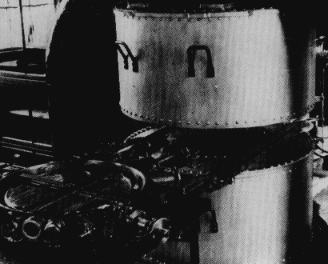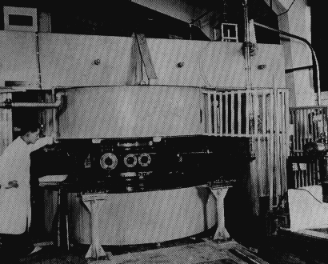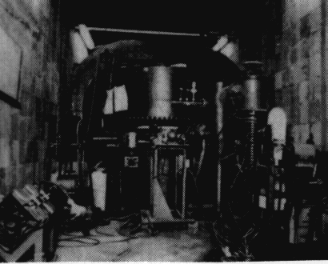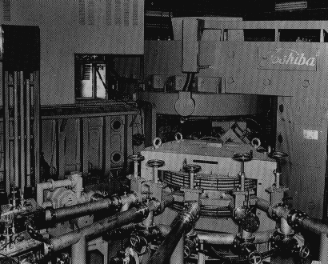History of the RIKEN cyclotron
 The first cyclotron in Japan was build by Dr. Nishina
at RIKEN in 1937 and was used for pioneering studies
on nuclear physics, nuclear chemistry, and biology. After
seven years, in 1944, a large cyclotron was constructed
also by Dr. Nishina. Unfortunately, it was destroyed
mistakenly the occupation forces immediately after World
War II; however, the pioneering spirits was never defeated.
Followed by a small cyclotron rebuilt in 1952, a 160-cm
cyclotron was constructed in 1966, which accelerated not
only light ions but also heavy ions of various elements.
The first cyclotron in Japan was build by Dr. Nishina
at RIKEN in 1937 and was used for pioneering studies
on nuclear physics, nuclear chemistry, and biology. After
seven years, in 1944, a large cyclotron was constructed
also by Dr. Nishina. Unfortunately, it was destroyed
mistakenly the occupation forces immediately after World
War II; however, the pioneering spirits was never defeated.
Followed by a small cyclotron rebuilt in 1952, a 160-cm
cyclotron was constructed in 1966, which accelerated not
only light ions but also heavy ions of various elements.
The heavy ion provide a unique opportunity for studies
in a variety of field including unclear physics, atomic
physics, solid state physics, nuclear chemistry,
material engineering, radiation chemistry, and radiation biology.
Though the work performed at the cyclotron, accelerated
heavy ions are recognized to be a versatile tool for
many fields and, therefore, a new-generation accelerator
has been demanded.
The world's first variable-frequency
linear accelerator(RILAC) has been in operation since 1980.
the RILAC accelerates all ions in the periodic table to an
energy of 4 MeV/nucleon for light ions and 0.8 MeV/nucleon
for heavy ions. The RILAC also acts as an injector for the
higher-energy RIKEN ring cyclotron (RRC), which stated to
deliver beam of heavy ions in late 1986.
 1st cyclotron
1st cyclotron
Magnet diameter 65 cm. The first cyclotron in Japan.
Completed 1937.
 2nd cyclotron
2nd cyclotron
Magnet diameter 150 cm. Completed 1943.
 3rd cyclotron
3rd cyclotron
Magnet diameter 65 cm. Completed 1953.
 4th cyclotron
4th cyclotron
Magnet diameter 210 cm. Completed 1966.
 Return to the home page of RIKEN
Accelerator Research Facility
Return to the home page of RIKEN
Accelerator Research Facility
last updated on 25 Oct 1996 by T.Ichihara (www-admin@rikvax.riken.go.jp)
�


 1st cyclotron
1st cyclotron  2nd cyclotron
2nd cyclotron 3rd cyclotron
3rd cyclotron 4th cyclotron
4th cyclotron